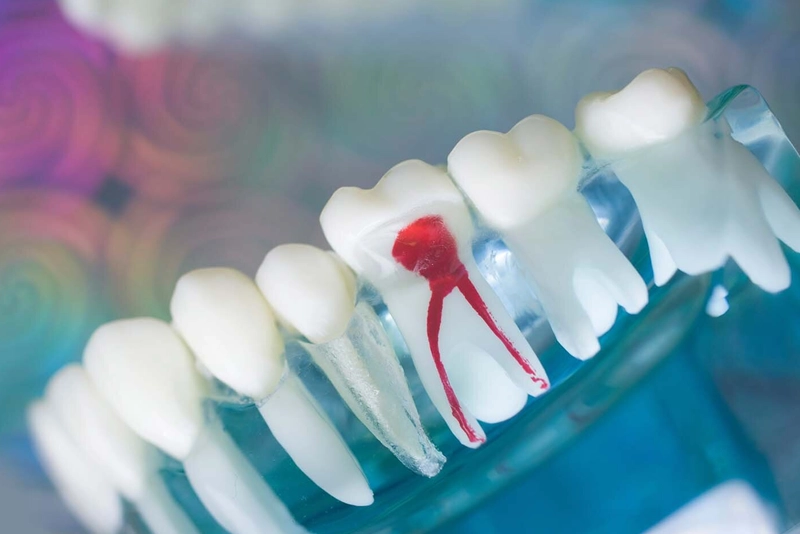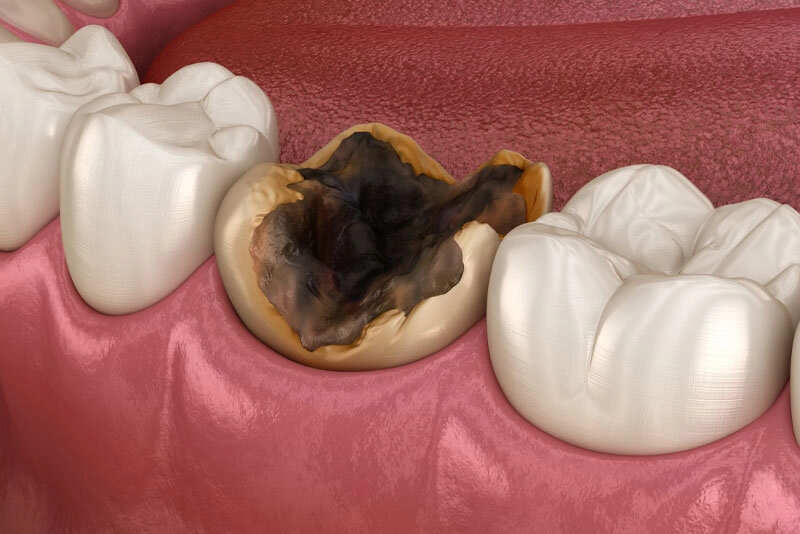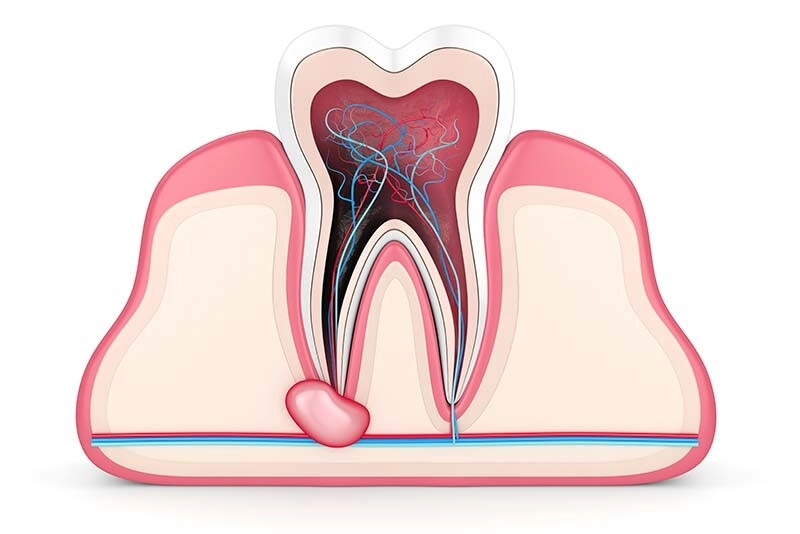Your Toothache
Can be a Sign of Bigger Problems
Are you experiencing tooth sensitivity or pain when eating, drinking, or biting? In most cases, a toothache signals that an infection has invaded your inner tooth, damaging the pulp inside the tooth root. Infection is often caused by a severe tooth crack, severe tooth decay or injury. If left untreated, the infection can worsen and lead to a tooth abscess. Even worse, it can spread to your jawbone and other parts of your body, which can seriously impact your overall health. An extensive infection may even require a tooth extraction, which is known to cause bone loss.
Root canal therapy is a common procedure that treats fractured or infected teeth that can help save your tooth from extraction. This treatment is used to repair and save a badly damaged or infected tooth by a McKinney root canal dentist. The procedure involves removing the damaged area of the tooth (the pulp), cleaning and disinfecting, filling, and sealing it.
With prompt treatment by an experienced dentist like Dr. Ernesto Prida, you can get rid of your toothache and save your tooth!

Dr. Prida, a root canal specialist, a has years of experience performing root canal therapy. He will alleviate the discomfort, getting you out of pain and saving your tooth.
Signs that a Root Canal is Needed
Your McKinney Root Canal Dentist
Repeated infections
Sharp and shooting pain
Long-lasting throbbing pain that increases in severity
Dull ache and pressure
Severe pain when chewing or biting that lasts several minutes
Long-lasting sensitivity or pain to hot or cold
The tooth becomes dark or discolored
Swelling and tenderness of the gum
White bump on your gum, indicating an abscess (infection & pus)

Signs that a Root Canal is Needed
Your McKinney Root Canal Dentist
Repeated infections
Sharp and shooting pain
Long-lasting throbbing pain that increases in severity
Dull ache and pressure
Severe pain when chewing or biting that lasts several minutes
Long-lasting sensitivity or pain to hot or cold
The tooth becomes dark or discolored
Swelling and tenderness of the gum
White bump on your gum, indicating an abscess (infection & pus)
What is Root Canal Therapy
Root Canal Dentist in McKinney
In a root canal procedure, the dangerous infection will be removed from the inside of your tooth before it worsens and spreads to other parts of your mouth. It’s always better to treat a toothache before it worsens and possibly becomes severe. Don’t delay: If you are suffering from dental anxiety, there is no need to worry. We offer an array of sedation dentistry services to ensure you are relaxed throughout your procedure.
Root canals are recommended or needed when there is an infection deep within the tooth. Without treatment, the infection can become severe enough that the tooth has to be removed or infect the jaw bone. During root canal therapy, special tools are used to enter the affected tooth through its chewing surface. The pulp is removed, and once the canal is cleaned out and disinfected, it's filled with a sterile, rubber-like material that seals the canal to prevent bacteria from re-entering the canal.
Taking good care of your teeth and gums is a crucial after a root canal. You may need to schedule an additional visit with your dentist to X-ray the treated tooth and to make sure that all signs of infection are gone, in addition to the twice-yearly dental cleanings and exams. Schedule your appointment with Dr. Prida today.
Stonlodge Dental's
Primary Services
Dr. Ernesto Prida at Stonelodge Dental has extensive training and years of experience performing complex root canal procedures in McKinney, TX. We offer root canals in McKinney, TX for even the most complex cases to get rid of your tooth pain and save your tooth from extraction.

Root Canal Therapy Procedure
After your root canal procedure is complete, you’ll feel completely relieved of constant tooth pain, and you’ll enjoy the full function of your tooth.

Root Canal Cost
The cost varies depending on how complex the problem is. Most dental insurance policies provide some coverage for root canal therapy.

Need a Root Canal?
The McKinney dentists at Stonelodge Dental will walk you step-by-step through the procedure and explain how a root canal can save your teeth.







Dr Ernesto Prida
Cosmetic Dentist and General Dentist located in McKinney, TX
Dr. Prida's passion is to not only provide patients with excellent services but also crafting an aesthetically beautiful smile for each person. Since he graduated from dental school, Dr. Prida began to advance his knowledge in cosmetic dental treatments and continued education in dentistry. As a general dentist, Dr. Prida performs regular teeth cleanings and diagnoses problems that patients have with pain and oral health.